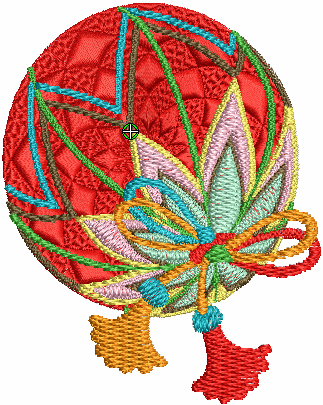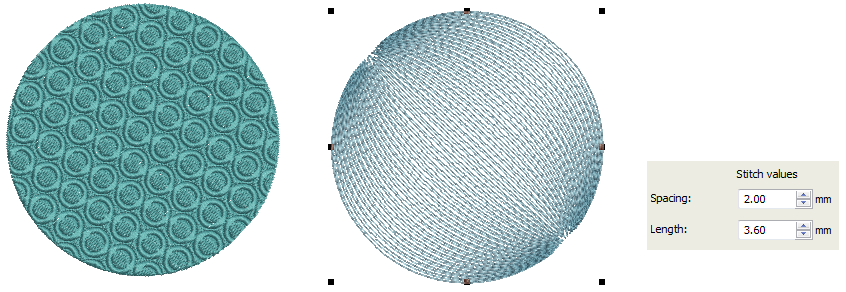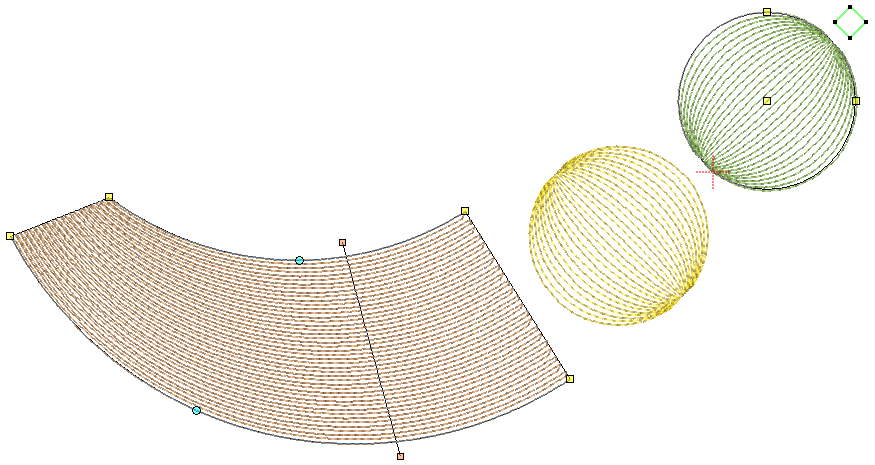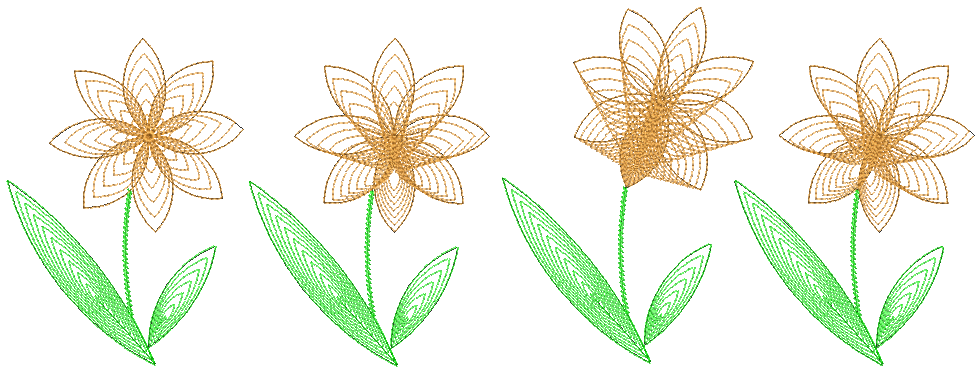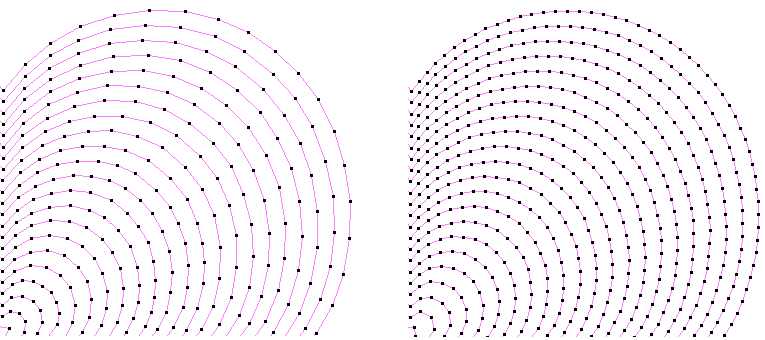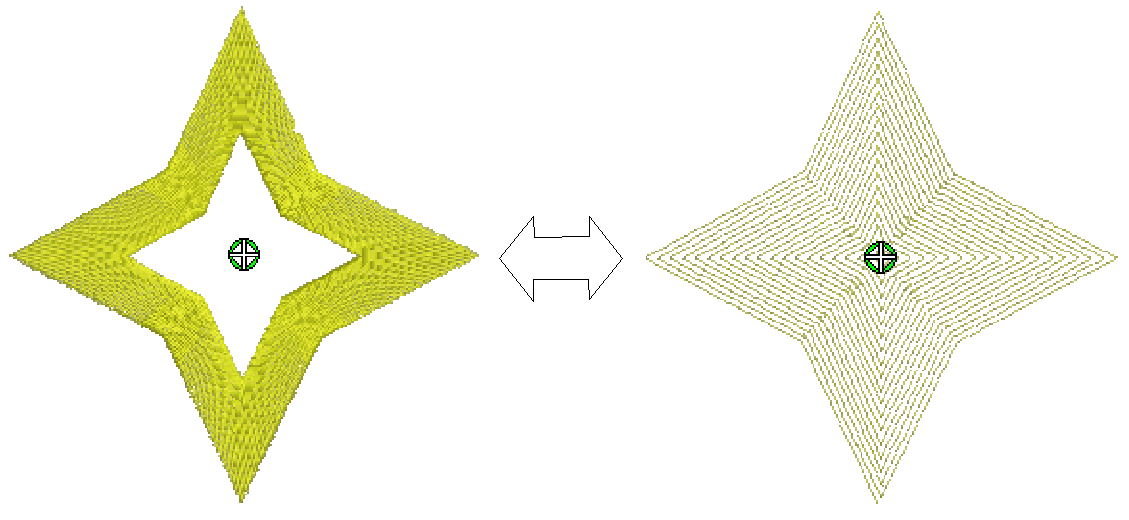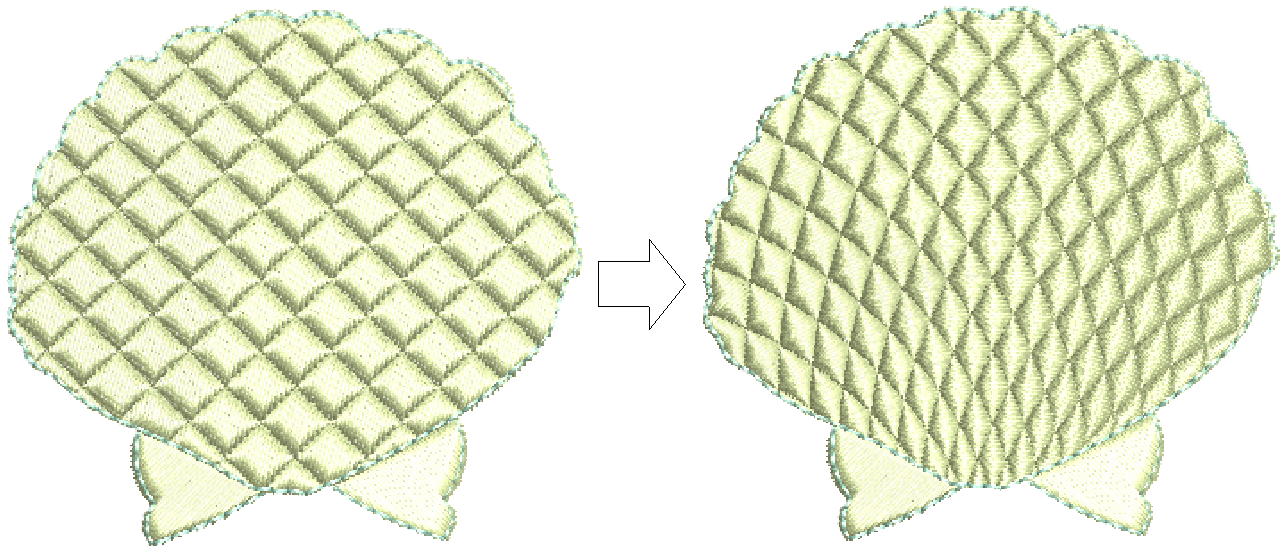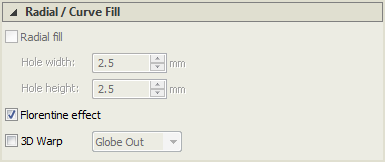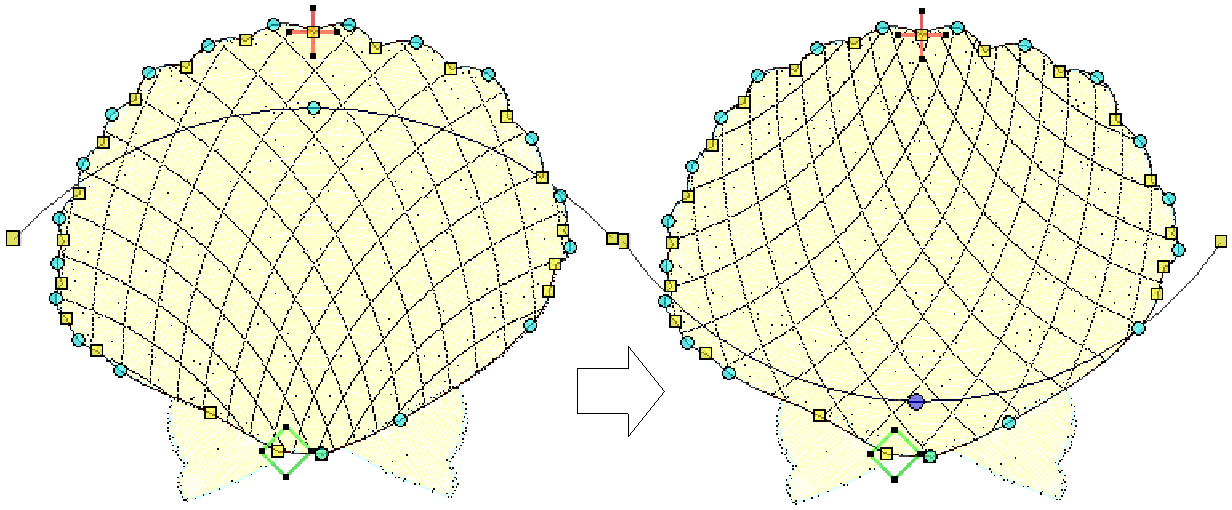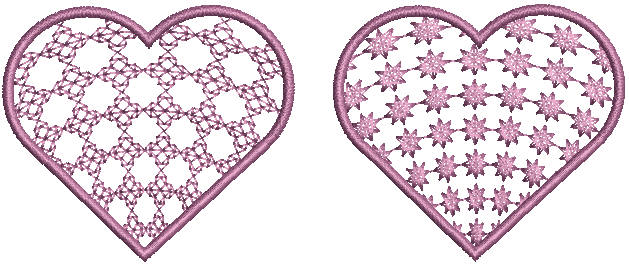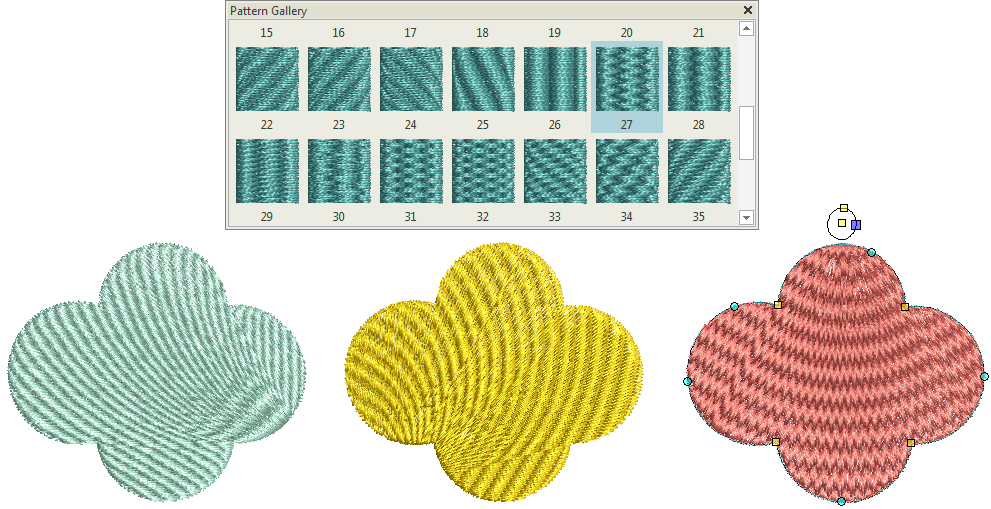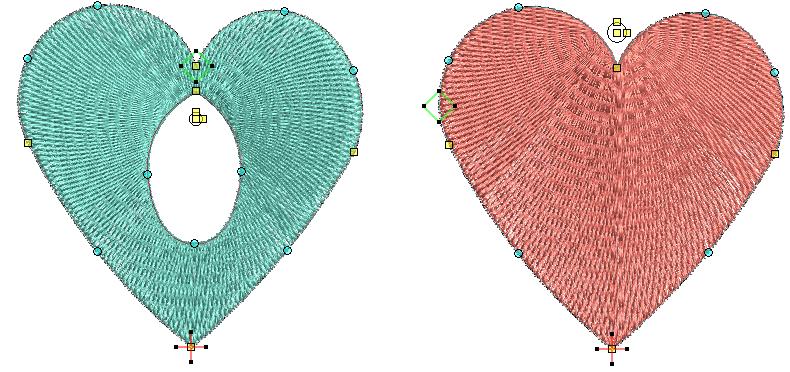Curved fills
The software provides several techniques for creating curved stitching. Contour fill follows the contours of a shape, creating a curved, light and shade effect. Ripple fill is achieved by radiating a stitch pattern from a common central point. Florentine effect can be applied to filled objects to create a flowing stitch effect along a digitized line. Radial fill generates radial turning stitching in most fill stitch types.
Use Object Properties > Fill > Contour to create stitching which follows object contours, creating a curved, light-and-shade effect. |
Use Digitize > Circle / Oval to quickly digitize circular shapes using current stitch settings. |
Use Digitize > Digitize Blocks to digitize shapes of varying width with turning stitching. |
Contour fills
Contour is a curved fill stitch type – stitches follow the contours of a shape, creating a curved, light and shade effect. Use it to create a sense of movement in contrast to flatter fills created by satin or tatami stitching. It can be used with Circle or Digitize Blocks input tools.
Adjust stitch length for smoother or sharper curves. Adjust stitch spacing for denser or more open stitching.
Stitch angle has little effect on pattern layout, but entry point in circle objects does.
Use Object Properties > Fill > Ripple to create spiral stitching from the center of any filled object. |
Ripple fills
Ripple Fill stitch is related to Contour stitch, providing a similar look (with a fixed number of lines and variable spacing) but spiralling out from the center of a filled object. It can be applied to any filled object. Stitch angle has no effect on pattern layout.
Adjust Stitch spacing for denser or more open stitching. Adjust Stitch length for smoother or sharper curves.
The center of the Ripple stitch can be moved with the Reshape tool.
If the object has a hole, this is ignored when Ripple is applied but still exists when other stitch types are applied.
.
Florentine fills
Florentine effect allows you to contour fill stitches along a digitized guideline. Stitches follow the line but maintain uniform density and needle penetration patterns.
Use smaller stitch lengths – e.g. 4.00 mm or less – for best results. Florentine can be combined with Embossed fill, Motif fill, and other fancy stitches for enhanced effect.
Use the Reshape tool to change the shape of the curve. Press <Enter> to finish.
Florentine fill can be applied together with Embossed fills, Motif fills as well as Tatami patterns.
.
Radial fills
Radial fill generates radial turning stitching in several stitch types such as satin and tatami stitch. Use tatami patterns to accentuate the effect. Stitches are generated from the outside edge to the geometric center.
Radial fill is applicable to several object shapes – closed, circle and rectangle. Use the Reshape tool to modify the effect. The hole can be resized either interactively or via object properties. It can relocated by means of the positioning handle at the center.
Unlike Ripple fill, the center of Radial fill can be moved outside the shape or into an included hole to achieve a different effect. Different tatami patterns achieve different effects. It can also be applied together with various fancy fills.
Tips for use
Not all patterns and stitch settings or objects (size specific) are suitable for Radial fill. In particular, if you are using it with larger objects, use one or a combination of the following to avoid bunching at the center:
- Increase the size of the hole
- Move the center into an existing hole in the object, or move it outside the object altogether.
- Add Feather Edge to the inside. See also Feather edge.
- Use larger stitch spacing – increase by about 20%.
- Avoid patterns which add needle penetrations close to the center of the object.
- Use Edge Run underlay with smaller objects, to help reduce the number of stitches at the object center. See also Stitch reinforcement.
- For fewer problems and a better embroidery result, use an SUK or H/E embroidery needle if your machine can use these needle types.
- For best effect, use Radial fill with ring shapes. The size of ring should be about 20% of the outer diameter.
You are not able to directly edit the stitch angles generated by Radial fill. However, you can apply Break Apart to edit the resulting turning angle closed object.
.
3D Warp
Another way to create curved motif fills is with 3D Warp. Use it to make shapes appear concave or convex.
Using Globe In with 3D Warp gives a concave effect by increasing motif size and spacing around a center point. Globe Out gives a convex effect by decreasing motif size and spacing.
Use the Reshape tool to customize the shape of the 3D Warp envelope. You can apply the effect to an entire object, or to a specific part of the fill.
You can generate layers of colored motifs by duplicating an object and applying a different color. For example, after filling a shape with circles, you can create a second layer, offset it, and apply a different color. You can then apply effects such as Globe Out to the whole motif fill.
